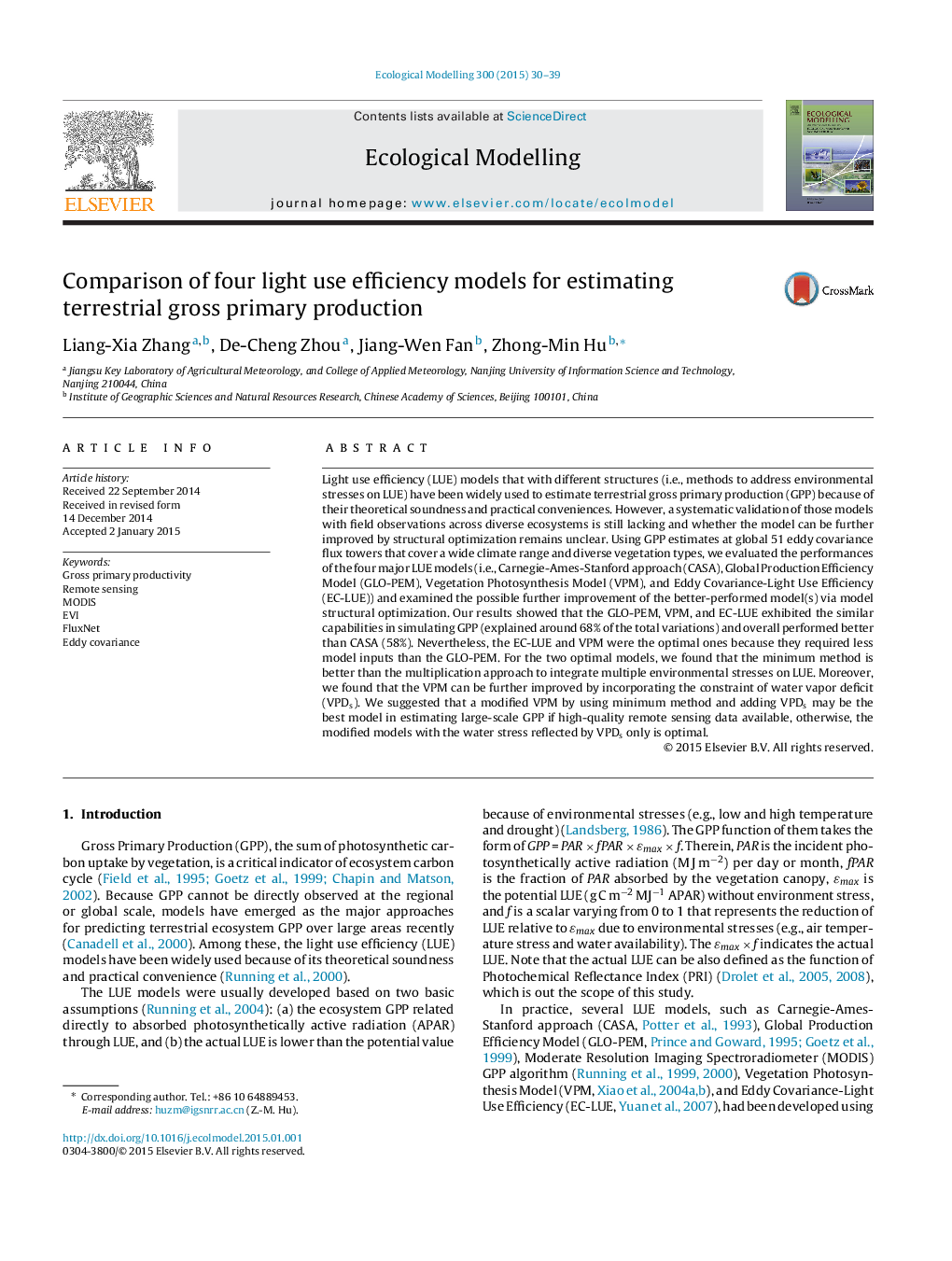| Article ID | Journal | Published Year | Pages | File Type |
|---|---|---|---|---|
| 6296644 | Ecological Modelling | 2015 | 10 Pages |
Abstract
Light use efficiency (LUE) models that with different structures (i.e., methods to address environmental stresses on LUE) have been widely used to estimate terrestrial gross primary production (GPP) because of their theoretical soundness and practical conveniences. However, a systematic validation of those models with field observations across diverse ecosystems is still lacking and whether the model can be further improved by structural optimization remains unclear. Using GPP estimates at global 51 eddy covariance flux towers that cover a wide climate range and diverse vegetation types, we evaluated the performances of the four major LUE models (i.e., Carnegie-Ames-Stanford approach (CASA), Global Production Efficiency Model (GLO-PEM), Vegetation Photosynthesis Model (VPM), and Eddy Covariance-Light Use Efficiency (EC-LUE)) and examined the possible further improvement of the better-performed model(s) via model structural optimization. Our results showed that the GLO-PEM, VPM, and EC-LUE exhibited the similar capabilities in simulating GPP (explained around 68% of the total variations) and overall performed better than CASA (58%). Nevertheless, the EC-LUE and VPM were the optimal ones because they required less model inputs than the GLO-PEM. For the two optimal models, we found that the minimum method is better than the multiplication approach to integrate multiple environmental stresses on LUE. Moreover, we found that the VPM can be further improved by incorporating the constraint of water vapor deficit (VPDs). We suggested that a modified VPM by using minimum method and adding VPDs may be the best model in estimating large-scale GPP if high-quality remote sensing data available, otherwise, the modified models with the water stress reflected by VPDs only is optimal.
Related Topics
Life Sciences
Agricultural and Biological Sciences
Ecology, Evolution, Behavior and Systematics
Authors
Liang-Xia Zhang, De-Cheng Zhou, Jiang-Wen Fan, Zhong-Min Hu,
